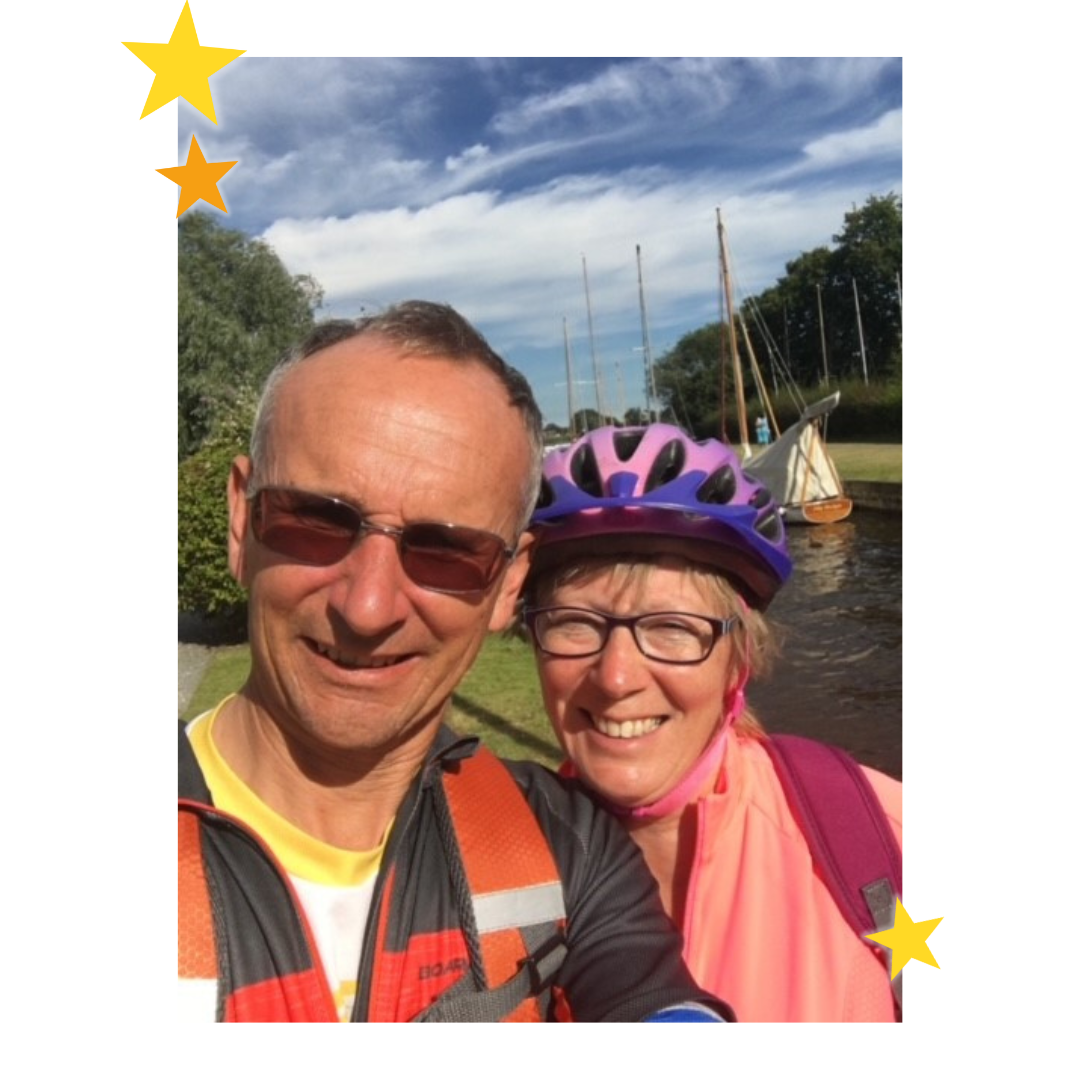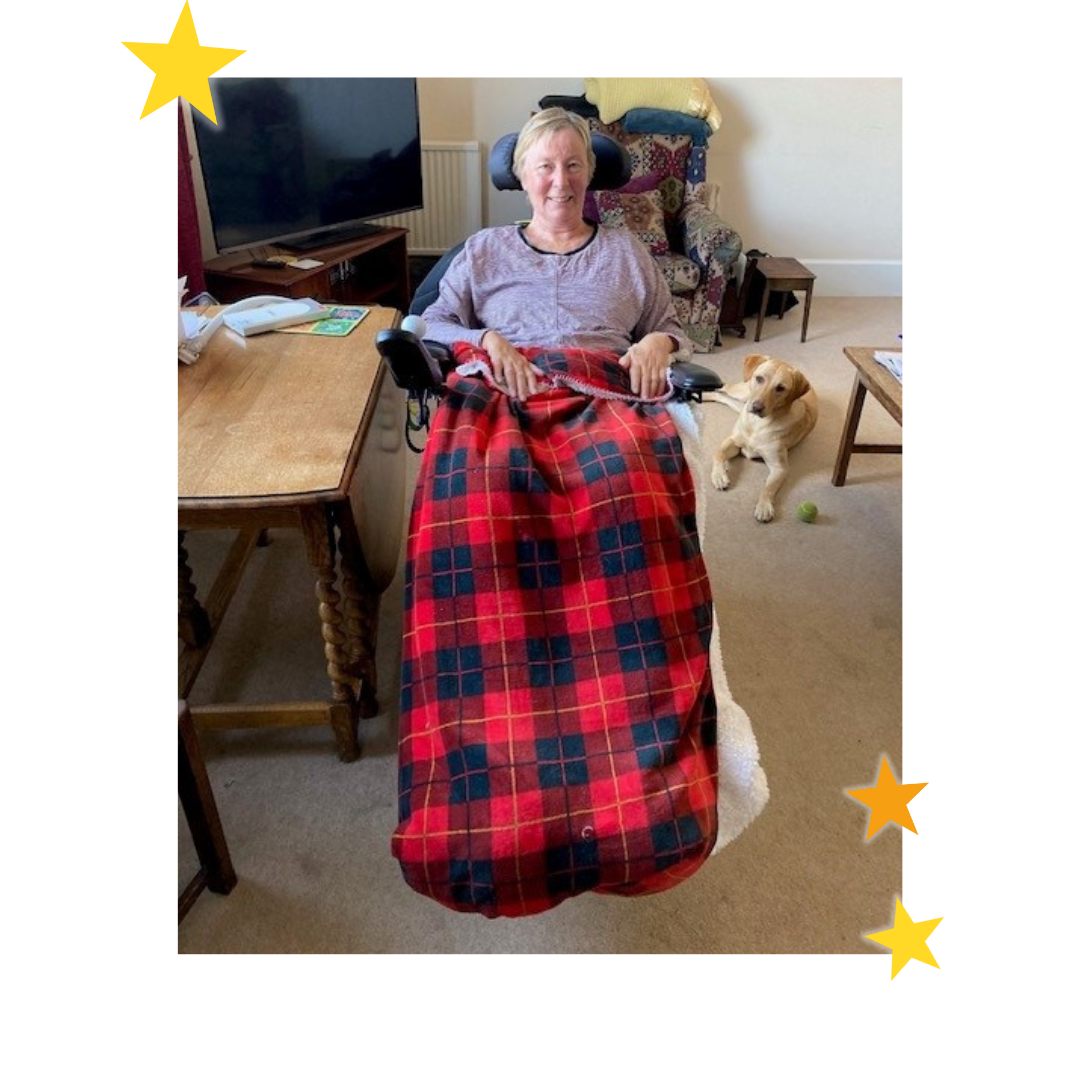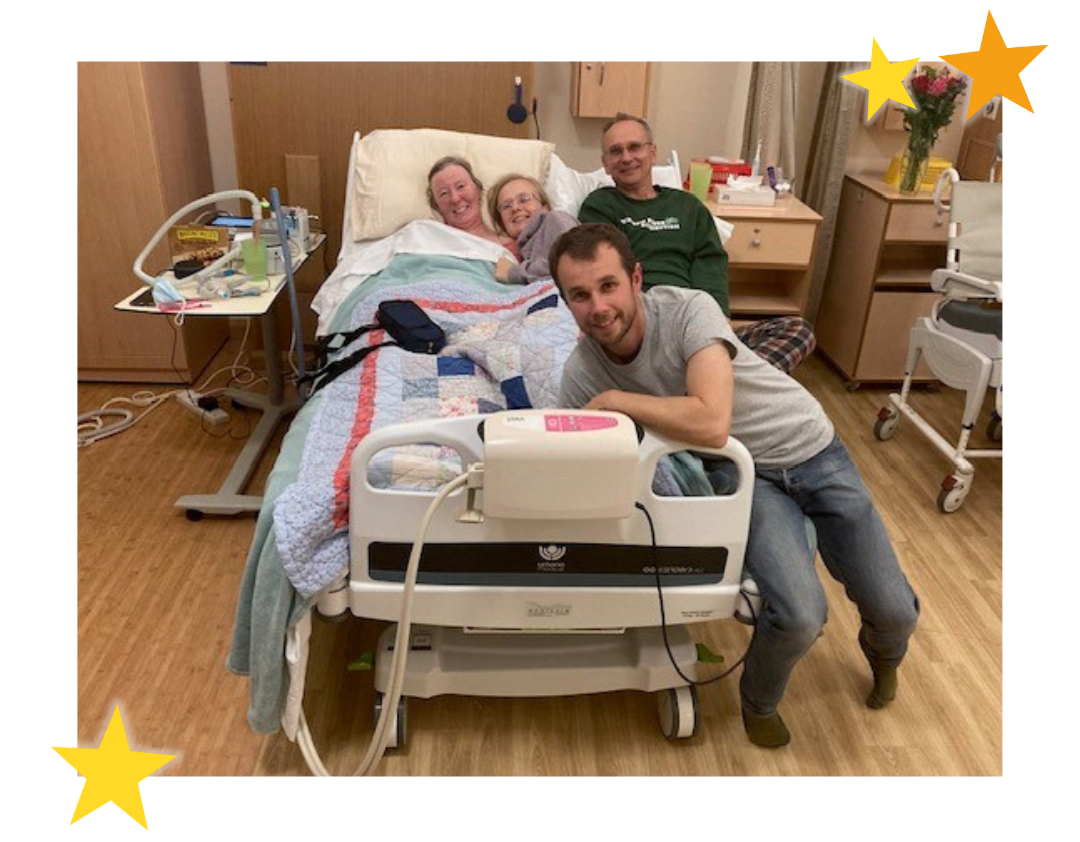Before we were referred to the hospice, it felt like we had a mountain to climb. Afterwards, everything felt possible.
 Julie and I had been married for 33 years. We had a fantastic time together, making great memories. Lots of lovely holidays, partners in our business, two wonderful children – Tom and Emily.
Julie and I had been married for 33 years. We had a fantastic time together, making great memories. Lots of lovely holidays, partners in our business, two wonderful children – Tom and Emily.
So a fun time until early 2021. On New Year’s Day, we went for an eight mile walk on the Blackdowns with the dog. Julie struggled a bit on that walk – she kept stopping and stretching her leg. At the time we thought she had plantar fasciitis.
But things got worse. Walking became difficult for Julie and a couple of times she just fell over. We all thought that was a bit odd. Eventually, Julie went to see her doctor. In May or June that year she finally got referred for tests, but even to us, things seemed to be moving quite quickly. By now Julie was walking with a stick and struggling to get around.
When the doctor told us Julie had motor neurone disease (MND), we were shell-shocked to start with. Absolutely gutted. We knew it was terminal and asked ‘how long?’ He said ‘I can’t tell you, but on average it’s between one and three years.’
At that point we decided we were going to do everything we possibly could to make Julie’s life the best it could be.
We were referred to St Margaret’s and from that time on we had regular conversations and visits from our hospice team. Different people got involved when needed – from a consultant to an occupational therapist and community nurses.

The hospice nurses were fantastic in so many ways. Ordering Julie’s prescriptions through the surgery was a real nightmare, as she was on so many drugs. The nurses managed to cut through the trouble and make it happen. They made that more bearable.
Kate, an Occupational Therapist at St Margaret’s, came to see us in the early days. She was absolutely brilliant. She appreciated things were moving quickly and helped us identify what we’d need to help Julie live safely and comfortably at home as her condition deteriorated.
We went from sharing a double bed to separate beds, as Julie moved into a hospital bed while I slept in a in a single bed next to her. We didn’t have a chance to cuddle any more. You can’t cuddle someone properly when you can’t get close to them. Even with the bed rails down it’s not the same. Julie was a real cuddler, so that was hard for us both.
Julie became dependent on the respirator to keep her alive. She’d fought the illness with every ounce of her energy, but made the decision that she wanted the respirator to stop. After being cared for at home for many months by myself, Tom, Emily, the hospice team and some wonderful carers, it was time to make Julie’s last journey and go into the hospice.
From the moment we got out of the car, the hospice were just brilliant.
They were so caring, they couldn’t do enough for us. They took us in, showed us our room, said ‘this is a cuddle bed’, and showed us how it worked – as a single bed that folded out to a double. It was the first time we were all able to cuddle Julie properly since April 2021. It was lovely.
On the last evening we spent together, we had one final meal with Julie, which was very special. Since having a feeding tube in the summer of 2022, she hadn’t been able to enjoy the taste of food – so the kitchen staff liquidised the food and she got to taste flavours again. After the meal, we all got into the cuddle bed together. Emily slept next to her mum that night.

The staff were incredible. They were very respectful, they didn’t intrude at all, but always seemed to know if we needed something.
They wouldn’t be far away, and they would just get it. I think at one stage they brought me something to eat and said ‘you need to eat Mark’. They were very conscious that I had to look after myself. So they didn’t just look after Julie, they cared for all of us in that room.
In a way, the support we had from the hospice meant Julie could maintain an element of control – when it felt like things were out of control all around her. If she was going to die, this was the way she wanted it.
When the respirator was removed, the team monitored Julie closely without intruding on our time as a family. Julie, being Julie, stayed there and kept on talking to us – none of us in the room could believe how long she kept talking… Julie was always known for talking; she didn’t disappoint right to the end. Even though it was a very sad time, it still made us all laugh. And all the time the hospice team were quietly in the background.
When Julie did die, it was such a peaceful experience. It’s something I’d rather not have gone through but it was very special to have us all there, and for Julie to have the people she loved – and we all loved her – so close with her at the end. She’d lived a great life and she wanted people to remember her for that, not the last bit.
The hospice always went the extra mile. It’s little things that make a huge difference. They can’t change what’s happening, but they make it more bearable.
Julie was adamant that we should get on with our lives as well. She told me: “what you’ve got to do is, I want you to put your big boy pants on and get on with it”. And that stuck. It was read out at Julie’s memorial service. That was Julie. So we’re trying, we’re really trying.